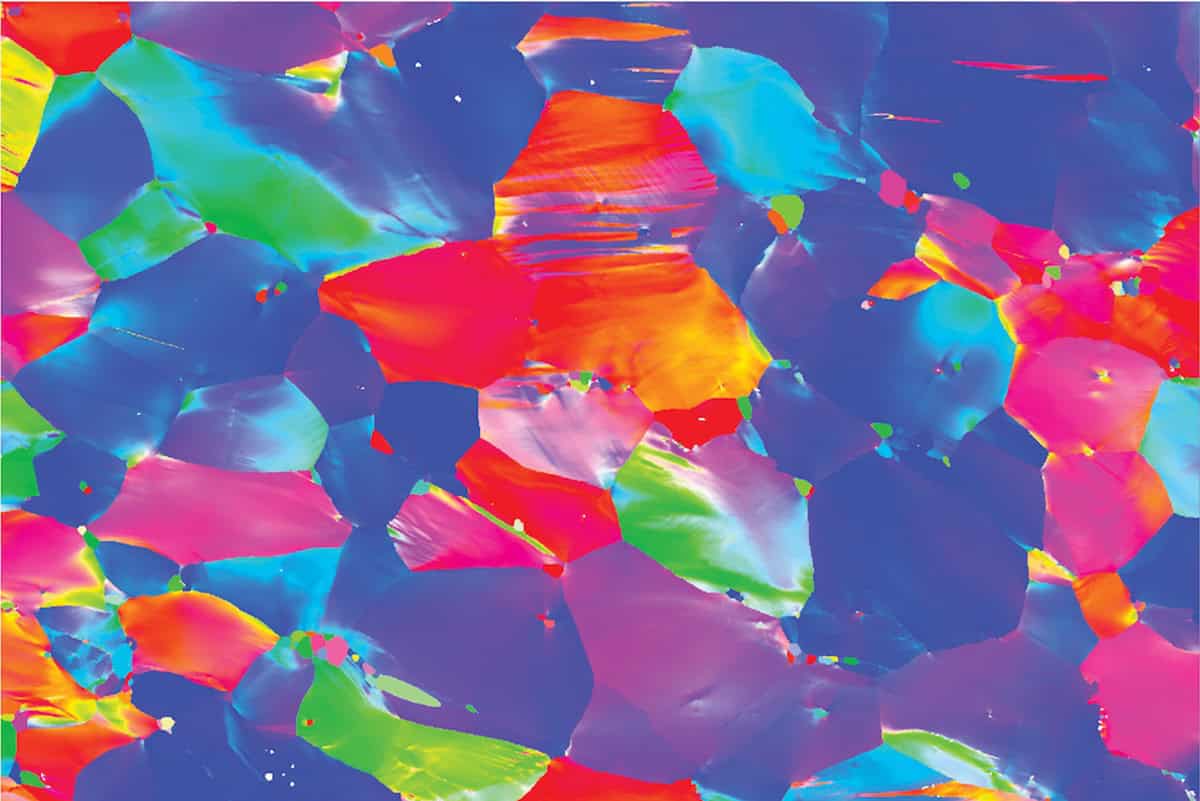
Good, fast, cheap: you can only pick two. We often have to make compromises in our day-to-day lives, but for materials scientists, trade-offs are the bread and butter of their work. Sometimes, however, a rare unicorn material is discovered that lets scientists have and eat their cake.
Researchers in the U.S. have developed a new metal alloy that is super strong and tough, and which can retain these properties at both extremely low and high temperatures. This unusual combination of properties is thought to be nearly impossible to attain.
The new alloy, composed of niobium, tantalum, titanium, and hafnium, is well-suited for high-performance aerospace engines and other demanding technological applications.
“The efficiency of converting heat to electricity or thrust is determined by the temperature at which fuel is burned — the hotter, the better. However, the operating temperature is limited by the structural materials which must withstand it,” said first author David Cook, a Ph.D. student at the Lawrence Berkeley National Laboratory.
“We have exhausted the ability to further optimize the materials we currently use at high temperatures, and there’s a big need for novel metallic materials. That’s what this alloy shows promise in.”
Unprecedented Material Toughness
Alloys are created by melting and mixing two or more metals together. Most alloys are made out of a base metal, with other metals or elements added to the molten mixture. Ordinary steel, for instance, is made of over 99% iron, and the rest is carbon.
This novel alloy, however, belongs to an alloy class known as refractory high entropy alloys (RHEAs) or medium entropy alloys (RMEAs). These alloys are defined by their composition of nearly equal quantities of elements, each with very high melting points, which introduces some very interesting properties.
Typically, RHEAs and RMEAs are known for their strength but suffer from low fracture toughness. So, they are prone to breaking under stress. However, this particular alloy (Nb45Ta25Ti15Hf15) shatters these expectations by exhibiting a fracture toughness more than 25 times greater than typical RMEAs at room temperature.
The researchers stressed the alloy under different temperatures, testing its strength and toughness at -196°C (the temperature of liquid nitrogen), 25°C (room temperature), and several elevated temperatures up to a staggering 1200°C. Remarkably, the alloy retained its high strength and maintained its fracture resistance across all tested conditions. No other conventional material is this robust.
A ‘Defect’ That Adds Toughness
“Our team has done previous work on RHEAs and RMEAs and we have found that these materials are very strong, but generally possess extremely low fracture toughness, which is why we were shocked when this alloy displayed exceptionally high toughness,” said co-corresponding author Punit Kumar in a press release.
To understand why this alloy behaves so differently from what is expected, the team employed advanced imaging techniques. Notably, they employed four-dimensional scanning transmission electron microscopy (4D-STEM) at Berkeley Lab’s Molecular Foundry. These investigations revealed that the microstructural mechanism responsible for the alloy’s toughness involves a defect known as a kink band.

Kink bands are abrupt bends in the crystal lattice that occur under stress. These typically weaken a material by making it easier for cracks to propagate. However, in this alloy, kink bands are no ‘defect’. They play a beneficial role by distributing stress and hindering crack propagation, thus preventing fractures.
“We show, for the first time, that in the presence of a sharp crack between atoms, kink bands actually resist the propagation of a crack by distributing damage away from it, preventing fracture and leading to extraordinarily high fracture toughness,” said Cook.
While the results are promising, the alloy will require further research and testing before it can be implemented in commercial applications like jet turbine engines or spacecraft components like a rocket booster’s nozzle.
The findings appeared in the journal Science.


